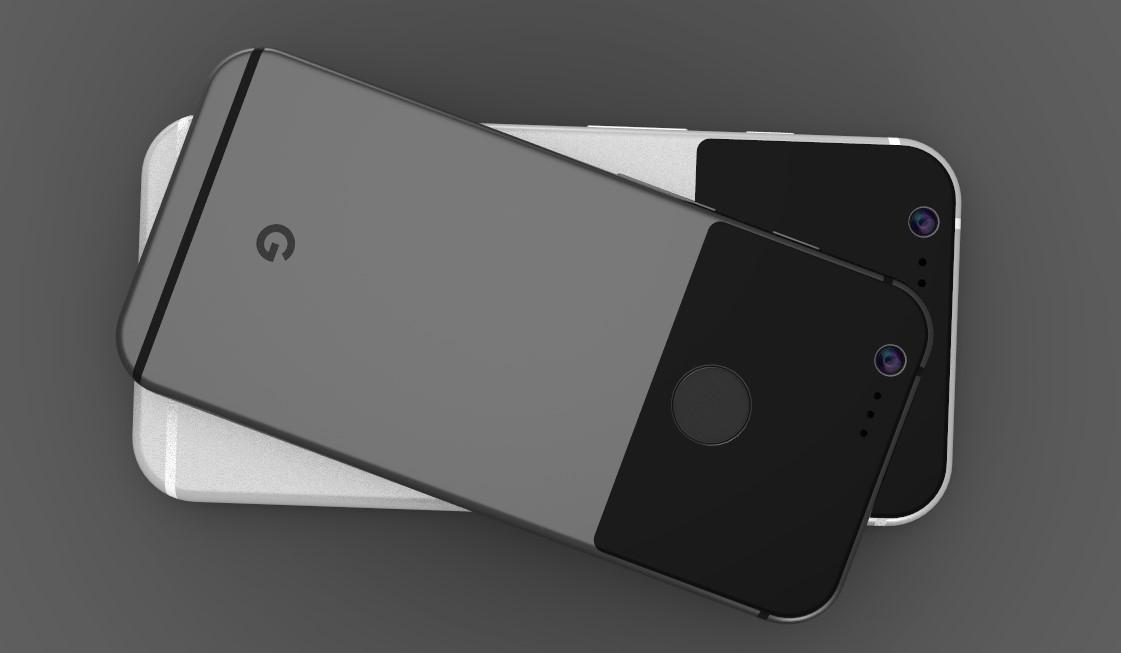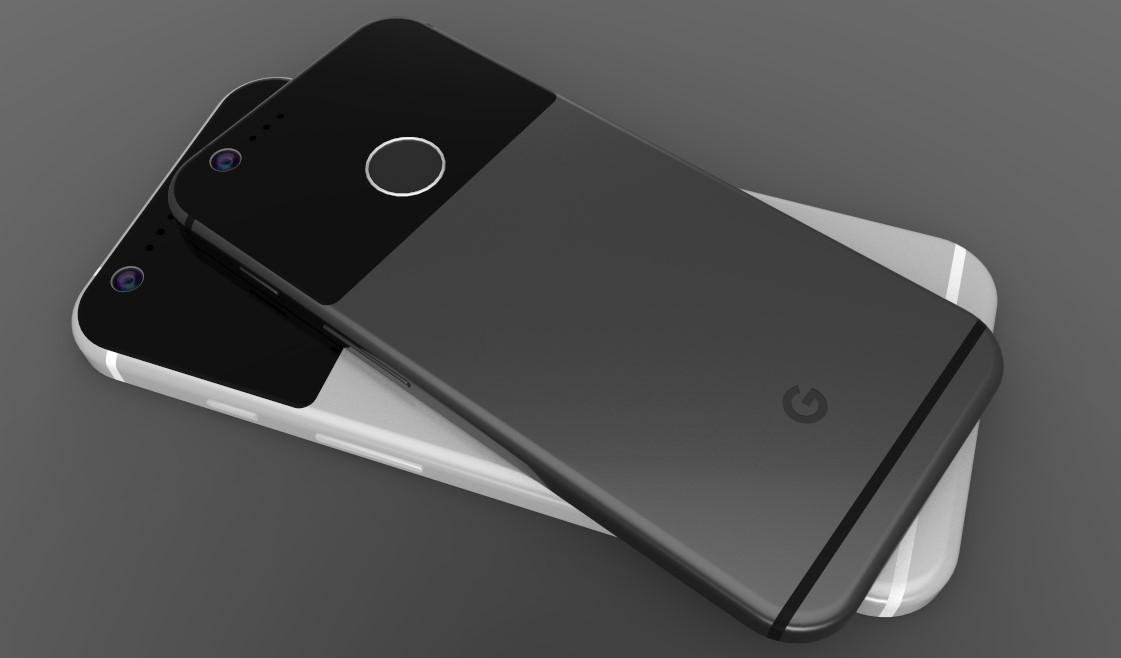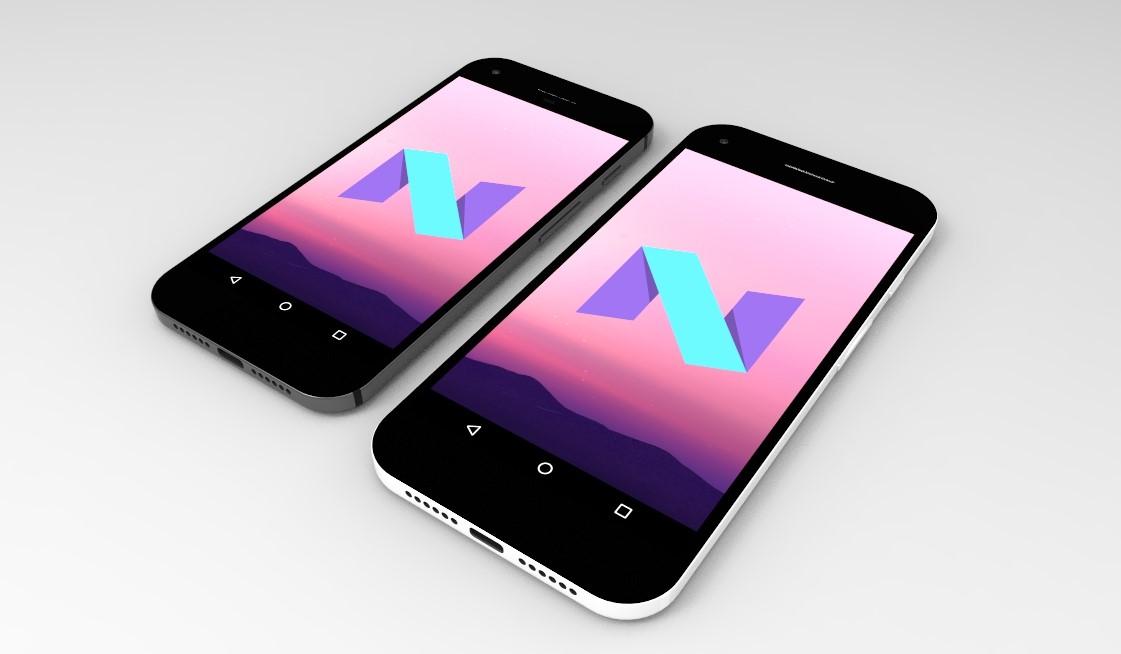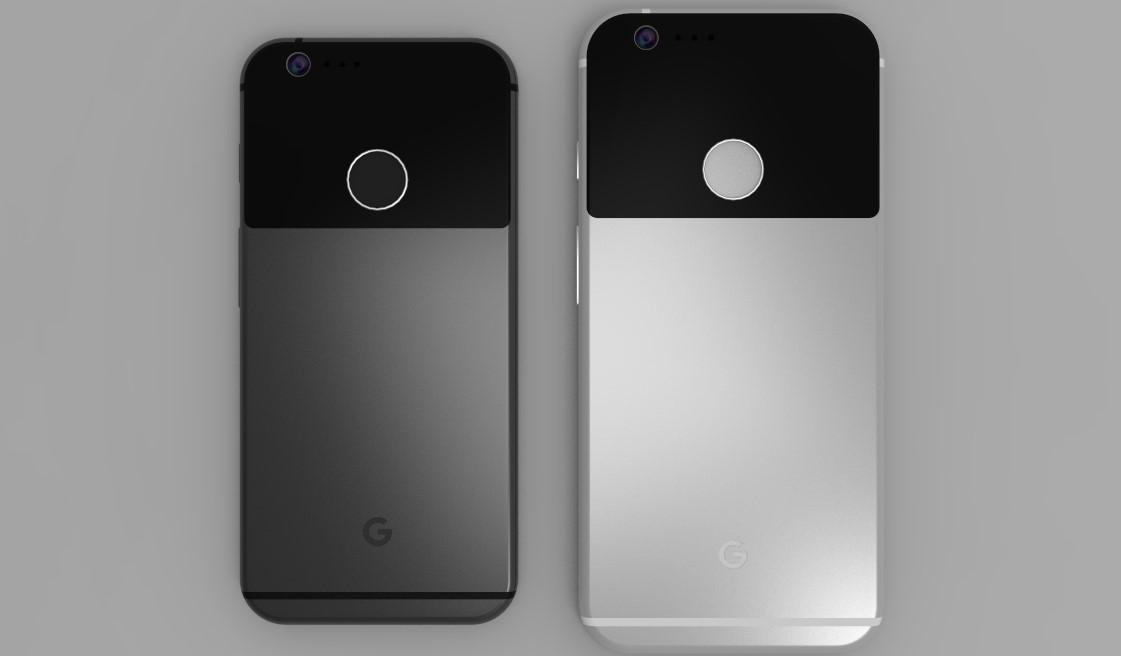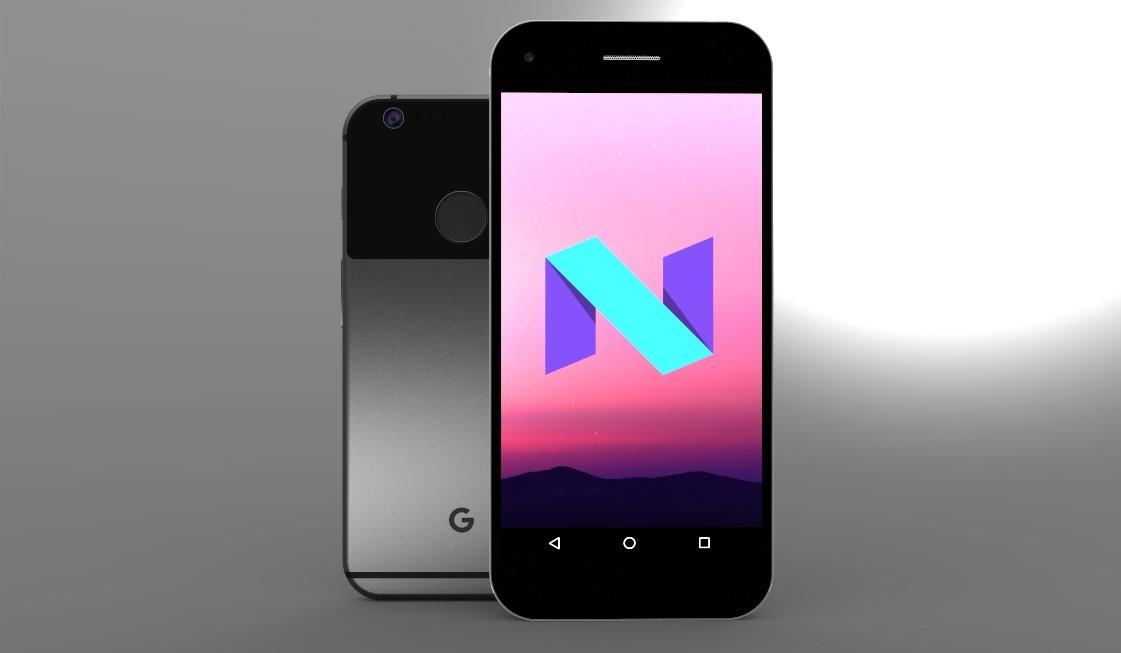Google Pixel Phone detailed in release-level flying colors
New images of the Google Pixel smartphone (one of two) have leaked, allowing a much clearer look at the simplicity of the company's next vision. Not entirely unlike one of several 3rd-party launchers with circular icons (as we saw earlier this month), this view of the smaller Pixel smartphone shows how the device will present an extremely straightforward way of using one's phone as an information source and app launcher. Google's "G" icon is also quite prevalent without requiring Google's full word brand mark to take up any more room than it needs to.
The images of the Pixel seen above and below were illustrated using one image from Venturebeat. What we've done here is to re-create each of the elements on the screen with Google's own Android icons (available to all developers and so forth for app development). For lettering, Google's Roboto font for Android sufficed – and is likely the font being used in the first place. We've also utilized the wallpapers leaked with the Pixel Launcher from earlier this month to show potential different looks for this launcher page.
In the gallery below are several images as created by 3D-illustrator Simon Paturel – as seen in our earlier article about a touchpad.
The rumored touchpad – which we're not entirely certain will come to fruition – is said to rest under the glass panels at the back of the Pixel and Pixel XL. This pad would, if delivered, control the desktop OS edition of Android, AKA Andromeda, something very likely extremely similar to what's available on some Chromebooks already today. Ready for action.
The details we've gathered before today and delivered below round off a couple of rather decent phones, very likely going by the names Pixel and Pixel XL. Should have called it Mega-Pixel, Google. Silly.
Pixel (Sailfish) (The Smaller)
• Display: 5-inch 1080p AMOLED
• Processor: Qualcomm Snapdragon 820
• RAM: 4GB (3.7 benchmarked)
• Internal Storage: 32GB, 64GB
• Camera: 12MP back-facing camera with 4K video recording
• Front-Camera: 8-megapixel
• Battery: 2770-mAh
• Connectivity: USB-C, Bluetooth 4.2, Wi-Fi, 4G LTE, 3G
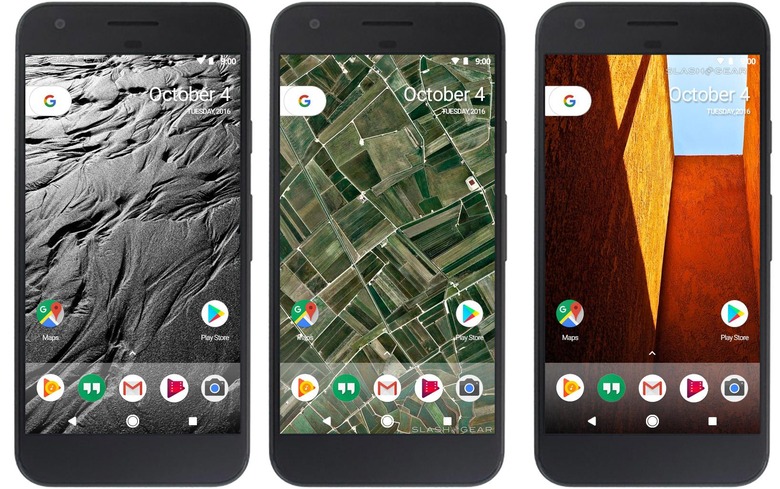
The information in spec-listing form above and below should not be accepted as fact until Google reveals these devices at the October 4th, 2016 event. That's where we expect a whole lot more action on the Android front (and beyond).
Pixel XL (Marlin) (The Larger)
• Display: 5.5-inch 2K 2560 x 1440 AMOLED
• Processor: Qualcomm Snapdragon 820
• RAM: 4GB (3.7 benchmarked)
• Internal Storage: 32GB, 128GB
• Camera: 12MP back-facing camera with 4K video recording
• Front-Camera: 8-megapixel
• Battery: 3450-mAh
• Connectivity: USB-C, Bluetooth 4.2, Wi-Fi, 4G LTE, 3G
In the display images shown above and below, two different forms of delivery can be seen. One is a blurred edition, the other has more clarity. It's likely Google will allow either – especially if there's no separate lock screen.
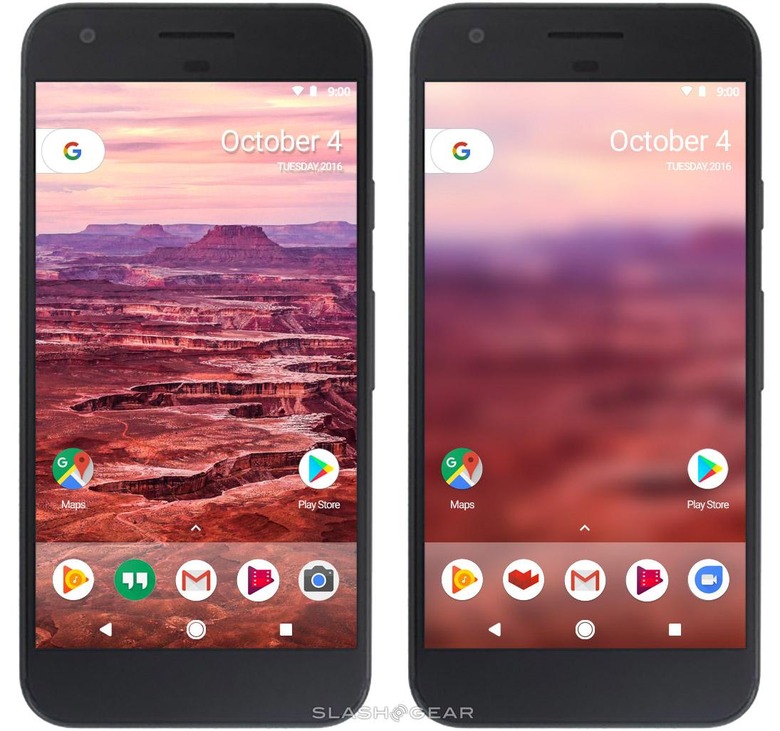
What we'd really like to see is the Android promise fulfilled, at last. By that I mean a full-on consumer launch of a Google phone or phones alongside other hardware whose software will be completely controlled by the company.
At Alphabet's Q2 2016 quarterly earnings call, CEO of Google Sundar Pichai made it all clear: "We realize a lot of computing innovations happen at the intersection of hardware and software. And as we are building ecosystems and broad platforms, we need a way to drive them forward, and so that's the context in which we do."
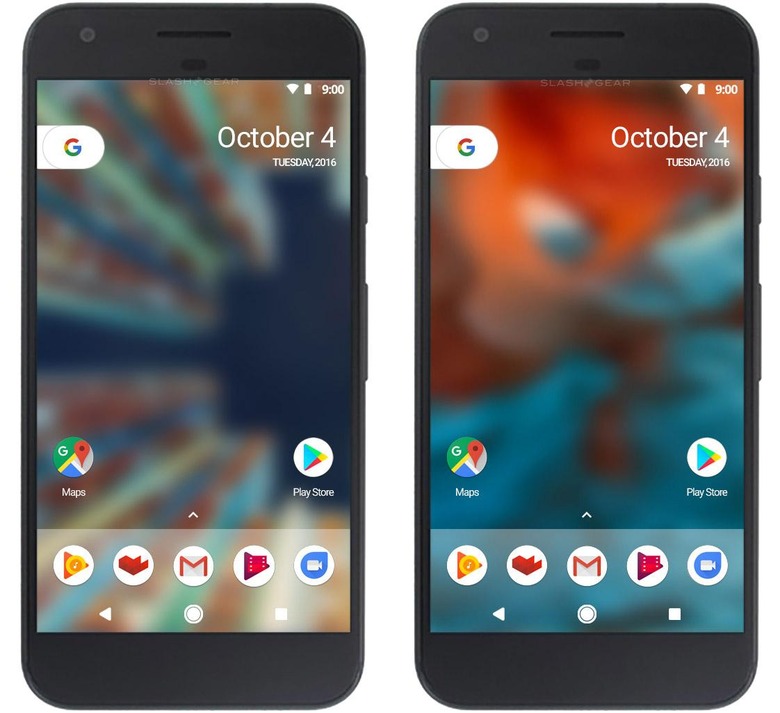
"There are areas where we have done it very seriously, like Chromecast is a great example," said Pichai. "You know, we now have over 30 million Chromecast devices sold. And, you know, that's an example of where we invest deeply. And especially as newer areas emerge, like Google Home, we want our ability to put the best experience possible in front of our users and guide the ecosystem. So that's how we think about it."
We'll be at Google's big event on the 4th of October, ready to bring the world all the hands-on and preview action straight from the source.
Stick around SlashGear's Android hub to lean more.

